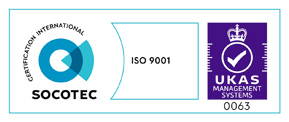
Carbon Footprint, Carbon Reduction Plan, and the Organisational Net Zero Carbon Strategy
6th January 2023
As the conversation surrounding climate change continues, more jargon appears. Carbon Footprint, Carbon Reduction Plan, Net Zero Strategy - though these terms may sound similar, they each play an important and unique role in reducing an organisation’s carbon emissions. It’s critical to stay informed, and for organisations to assess what these crucial words mean in the context of their organisation.
What do these terms mean, and how do they work together to reduce an organisation’s emissions?
Carbon Footprint
A Carbon Footprint is the first stage of an organisation’s sustainability journey – the information collated in a Carbon Footprint offers a baseline for all other activity. A Carbon Footprint allows an organisation to identify energy and carbon hotspots, and to use those hotspots to create targeted actions to aid effective carbon reduction on the highest carbon emitters.
It also allows an organisation to take the first steps in setting targets, engaging with stakeholders, and complying with various legislation. It’s important to note that legislation varies on behalf of each organisation, but large organisations should ensure that they are compliant with Streamlined Energy and Carbon Reporting (SECR), the Energy Saving Opportunity Scheme (ESOS), and Public Procurement Note 06/21.
Essentially, a Carbon Footprint details the ‘where we are’ portion of an organisation’s sustainability strategy.
Carbon Reduction Plan
A Carbon Reduction Plan, introduced by Public Procurement Note (PPN) 06/21, is a statement from an organisation detailing their current carbon footprint, along with their commitment to help the UK achieve Net Zero emissions by 2050. PPN 06/21 is applicable to suppliers to Central Government Departments, their Executive Agencies and Non-Departmental Public Bodies.
A Carbon Reduction Plan is designed to:
- Identify the impact that the project will have on the environment
- Provide details of the environmental measures that will be present in the plan
Suppliers can expect to include the following in their Carbon Reduction Plan:
- A confirmed commitment to achieving Net Zero Carbon by 2050 in the UK
- Current emissions for Scopes 1 and 2 of the GHG Protocol, as well as a plan for identifying and mitigating Scope 3 emissions
- Provisional emissions reporting in CO2e for all six gases referenced in the Kyoto Protocol
- A detailed outline of current environmental management measures, including specific plans and measures that focus on carbon reduction, and how those plans will be applied to achieve the Net Zero Carbon target
- Approval from the organisation’s governing body or board of directors falling within 12 months of the procurement date
- Proof that the Carbon Reduction Plan is publicly available through the organisation’s website
A Carbon Reduction Plan functions as a roadmap – showing an organisation how to get to Net Zero Carbon and setting out a strategy to do so.
Organisational Net Zero Carbon Strategy
Both the Carbon Footprint and the Carbon Reduction Plan are part of a wider sustainability measure – the Organisational Net Zero Carbon Strategy. For most organisations, activity falls into three stages: beginning the process, engaging with Net Zero, and inspiring others to achieve the same goals.
At the beginning of the process, an organisation should consider their emissions with a Carbon Footprint and analyse any historical areas of emissions production and potential areas for reduction. They should set a GHG emissions reduction target and begin implementing basic carbon emission reduction practices.
Moving forward, the organisation could consider creating and implementing Science-Based Targets, which would allow them to build and refine emissions reduction techniques.
Finally, the organisation should use what they’ve learned in previous research and align emissions with a 1.5°C of warming. At this stage, the organisation will be delivering on its Net Zero Carbon strategy and should now begin speaking to other organisations about their progress and how that progress can be replicated.
Carbon Emissions Offsetting
The last phase of an organisation’s Net Zero Journey is offsetting residual emissions. A carbon offset is an activity that reduces or removes carbon dioxide emissions, such as planting trees or other activity. Offsetting is an interesting discussion within the environmental sector – it’s appealing to try to offset organisational emissions instead of addressing carbon emitting hotspots and driving behavioural change. However, in many cases it’s difficult to verify tangible environmental benefits, and we recommend that organisations reduce operations emissions as much as possible before investigating offsetting to address residual emissions that cannot be removed.
Curious about ways to implement these plans? Whether you’re just considering a Carbon Footprint for your organisation or your organisation’s Net Zero Carbon strategy needs fine tuning, the GEP Environmental team would be delighted to help. Get in touch today.
< Back to all News
Would you like a free call-back from one of our Consultants?
Simply click the button below and one of our team will be in touch
Request a call-back
